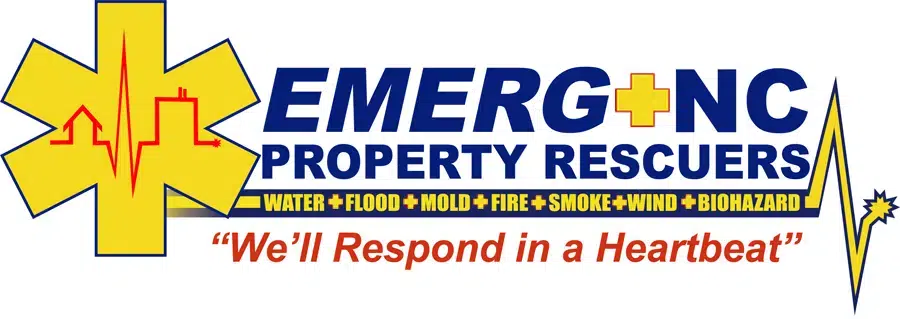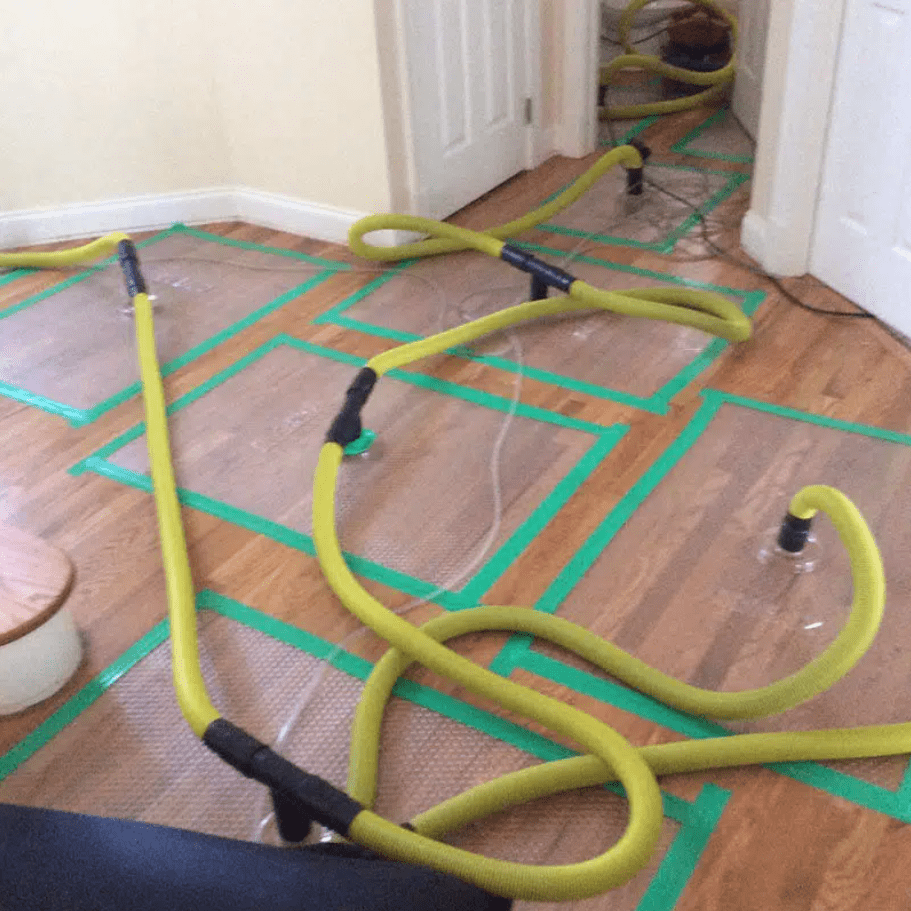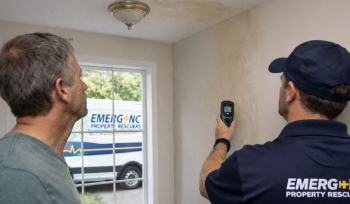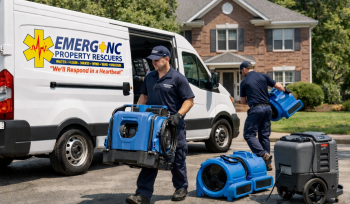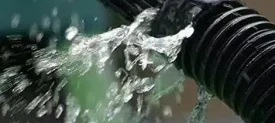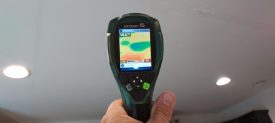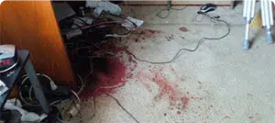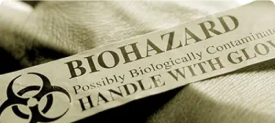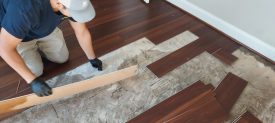EMERG-NC Property Rescuers
Your shower and commode are separated your master bathroom and can be closed off when you are using that area. You notice some minor discoloration on the ceiling above the commode, but you are not concerned. You can wipe it off another day. Wrong. It is not dirt or soot; this is not “mildew” which technically only grows on plant life… it is MOLD, and although it is only small, if you do not do something immediately, the mold will continue to spread and since 15-20% of the population has significant and some cases life threatening mold allergies, this could create a potentially serious health hazard to you and your family members.
Mold forms in places that either are naturally humid, or where there has been a water problem caused by a leaking roof or pipe. Some mold may be hidden behind wallpaper, under carpets in wall cavity spaces or in other areas not easily seen. If not remediated quickly (not just color changed with beach) , mold can spread and cause neurological symptoms such as headaches, trouble concentrating; short attention span, memory loss, dizziness, or it can cause or worsen allergies or allergic reactions causing skin irritation, rash, or pulmonary disease. It can even cause or aggravate life threatening chronic conditions, such as asthma, cancer or hypersensitivity pneumonitis (HP).
Mold can grow indoors and outdoors, and it more prevalent in localities that have high humidity problems such as North Carolina and is especially prevalent in areas affected by water and structures built with damp or wet building materials.
Mold can readily be recognized by a damp or musty smell, and the areas that have been subjected to water leaks and improper drainage all associated with water damage events and will generally have tell-tale water stains and marks that one can be sure either contain mold or will contain mold. To help prevent the growth of mold, the following steps are recommended:
- lower indoor humidity with air conditioners, de-humidifiers and exhaust fans
- inspect hoses and fittings on appliances, sinks, washing machines, refridgeratorsand toilets
- use household cleaners with mold-cleaning detergents ingredients to removed bio-film which mold grows on
- opt for paints and primers that contain mold inhibitors
- clean gutters to avoid overflow and check roof for leaks
- avoid carpet in wet areas like basements and bathrooms
Once discovered, the mold should be remediated quickly by a professional what is both certified and insured against mold related liabilities. Depending on how big the mold infestation is, the cost of remediation will vary from several hundreds of dollars to many thousands. In any case, drying out the affected areas may not be enough (below 17% moisture content); the requirement may be that all affected areas must be removed and replaced.
Mold damage has resulted in some monstrous jury verdicts including $14 million in Florida, $18 million in California and $32 million in Texas. Some well-known individuals have initiated mold law suits including Michael Jordan, Ed McMahon and Erin Brockovich.
As a result, insurance companies now often have disclaimers for mold damage, so it is important to read the policy to determine if such exclusion exists. If it does, the insurance adjuster will generally attempt to deny coverage claiming that the homeowner caused the mold or contributed to its spread by allowing wet areas to fester. However, if the mold is caused by a sudden and accidental incident, such as a pipe bursting, the cost of remediation probably will be covered by insurance. The reasoning is that technically the pipe burst and that caused the claim, not the mold itself. Roughly 22% of all homeowners’ insurance claims result from “water damage” and “freezing”, which includes remediation.
Some insurance companies also offer mold riders to the general homeowner’s insurance policies. However, a mold rider could cost an additional $500 to $1,500 a year on an existing policy, and more in humid climates. If your insurance carrier refuses to provide a rider because of the increased risk, some casualty companies might sell you a standalone mold policy if you are still concerned. However, the premiums for a standalone mold policy might range from $5,000 to $25,000, making the cost of the policy disproportionate to the value of your home.
In short, the prevention of mold through safeguarding measures is, in the long run, far less expensive than remediating mold or carrying expensive insurance. The homeowner must make that choice. If you have any type of water damage event at all, do yourself a huge favor and have it properly dried (a.k.a mitigated) and decontaminated. Do not take the take the position that it is only water. Water that is out of site and then considered our of mind, could totally destroy your largest possession and worse, perhaps make you and your loved one extremely will depending on allergy sensitivities.
